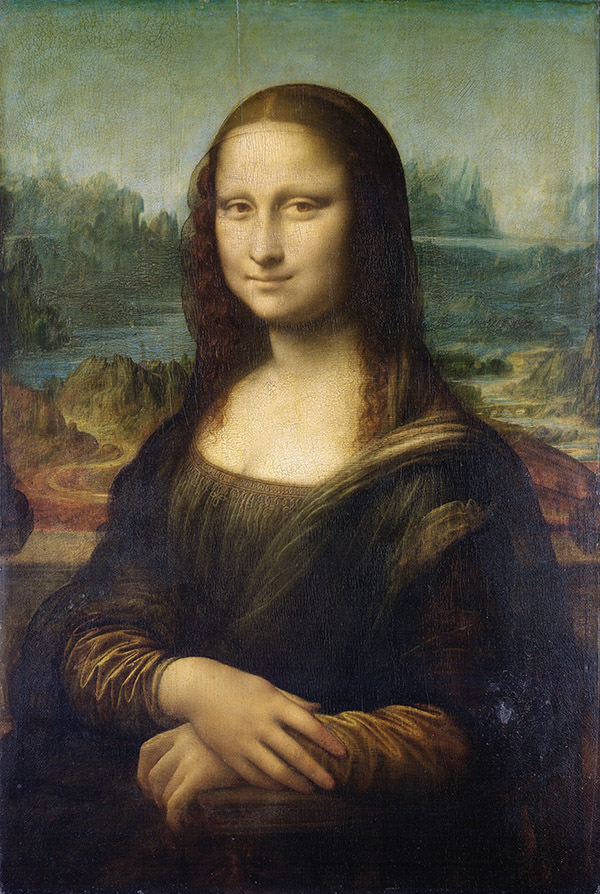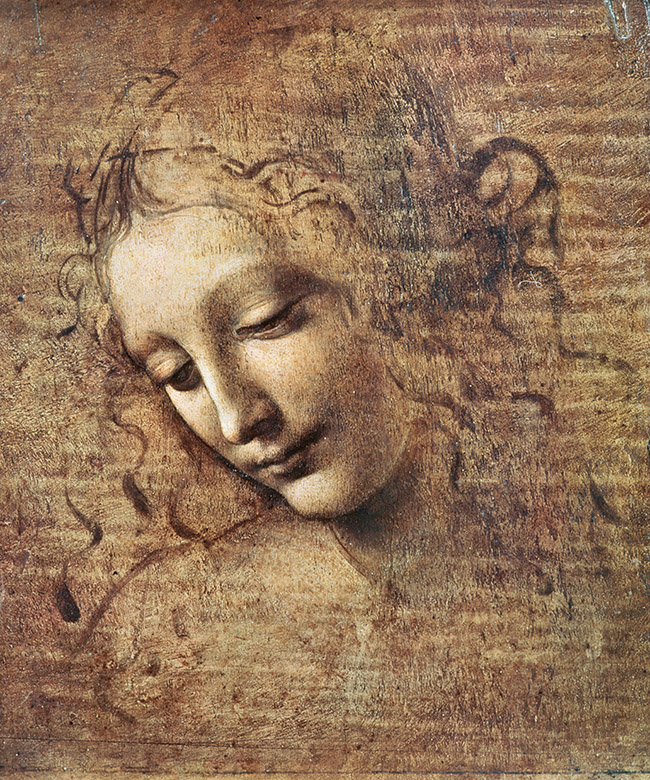Often regarded as one of the greatest painters of all time, Leonardo da Vinci has a multitude of strings to his bow. Anatomy, mathematics and architecture to name just a few. This post will look at a small selection of his most famous works, inventions and ideas.
|
The Mona Lisa – not only one of da Vinci’s most famous paintings but one of the most famous and widely recognised paintings ever. The Mona Lisa is one of the most valuable paintings in the world and so had to be mentioned. It is a portrait of Lisa Gherardini, a noblewoman of Italy. And although it is Lisa’s mysterious smile that leaves people with the most questions – the painting continues to attract debate and discussion. Even before it had gained the notoriety of today it was stolen from the Louvre in 1911, only returning to the museum in 1914. |
|
Head of a Young Woman with Tousled Hair Another famous painting is this portrait of a young woman, also known as La Scapigliata. The stark detail of the face contrasts so heavily with the tousled hair that you are made to believe it must be intentional and must be pointing to a contradiction within. Interpreted in a number of different ways, it has also been suggested that the drawing was a practise sketch for later work. Despite the contentions, the piece remains a delicate work of beauty. It can be seen in Italy in the Galleria Nazionale di Parma. |
|
Da Vinci’s artworks are just one section of his studies, however. Whilst his scientific discoveries are endless - his anatomical observations are one of the most fascinating as this is often where art and science are brought together. Da Vinci was permitted to dissect bodies in a hospital in Italy and this enabled him to acquire an acute understanding of human anatomy. Although an unusual task, these dissections allowed da Vinci to make many important drawings, for example, an accurate and true depiction of the spine. Despite these ground-breaking studies, it is often suggested that da Vinci’s findings were stunted by the era he was living in, due to the medical inaccuracies of the time. |
|
Studies of the Illumination of the Moon These pages are from the Codex Leicester which is a manuscript of da Vinci’s scientific theories. It covers many different discoveries on various topics including astronomy and the movement of water. In this picture, you can see writing and sketches relating to the luminosity of the moon. |
We hope you enjoy this overview of da Vinci’s work – see here for more. If you have any questions or need any help searching the archive, please don’t hesitate to contact us.



